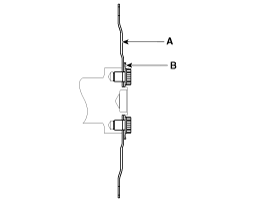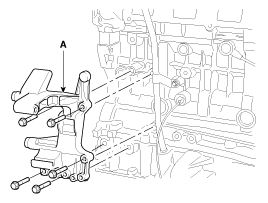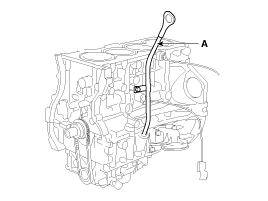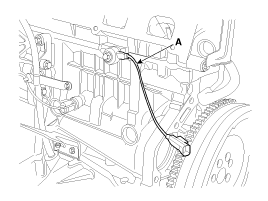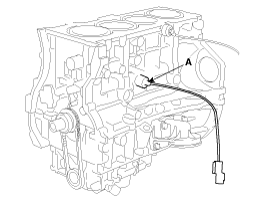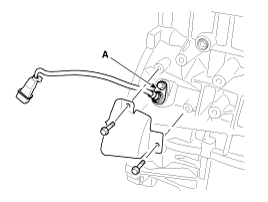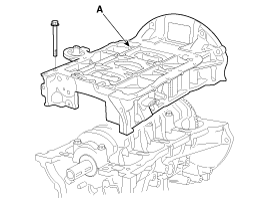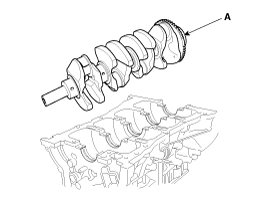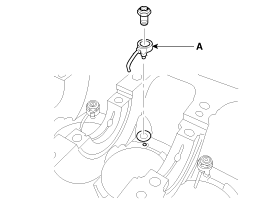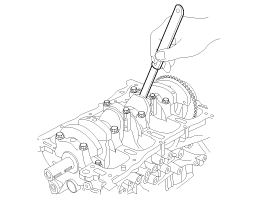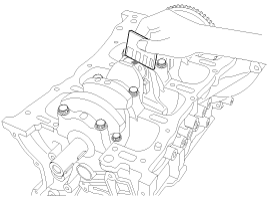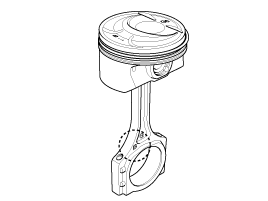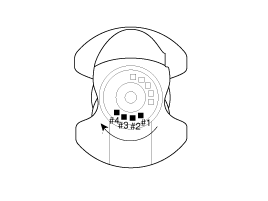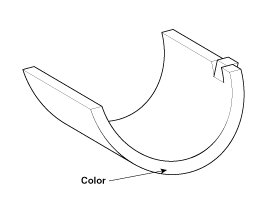|
1. |
Check the crankshaft bearing oil clearance.
|
(1) |
To check main bearing-to-journal oil clearance,
remove the main caps and bearing halves.
|
|
(2) |
Clean each main journal and bearing half
with a clean shop tower.
|
|
(3) |
Place one strip of plastigage across each
main journal.
|
|
(4) |
Reinstall the bearings and caps, then torque
the bolts.
Tightening
torque
14.7N.m (1.5kgf.m, 10.8lb-ft) + 27.5~31.4Nm
(2.8~3.2kgf.m, 20.3~23.1lb-ft) + 120~125┬░
|
|
Do not turn the crankshaft.
|
|
|
(5) |
Remove the cap and bearing again, and measure
the widest part of the plastigage.
Standard
oil clearance
0.020 ~ 0.038mm (0.00079 ~ 0.00150in.)
|
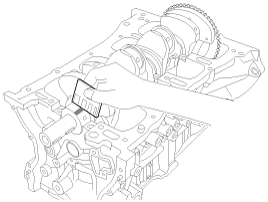
|
|
(6) |
If the plastigage measures too wide or too
narrow, remove the upper half of the bearing, install a new,
complete bearing with the same color mark (select the color
as shown in the next column), and recheck the clearance.
|
Do not file, shim, or scrape the
bearings or the caps to adjust clearance.
|
|
|
(7) |
If the plastigage shows the clearance is
still incorrect, try the next larger or smaller bearing (the
color listed above or below that one), and check clearance again.
|
If the proper clearance cannot be
obtained by using the appropriate larger or smaller
bearings, replace the crankshaft and start over.
|
|
If the marks are indecipherable because
of an accumulation of dirt and dust, do not scrub them
with a wire brush or scraper. Clean them only with solvent
or detergent.
|
|
Crankshaft Bore Identification Mark
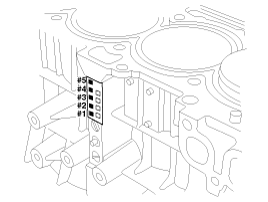
Letters have been stamped on the block as a mark
for the size of each of the 5 main journal bores.
Use them, and the numbers or bar stamped on the crank
(marks for main journal size), to choose the correct bearings.
Cylinder Block Specifications
Calss
|
Mark
|
Inside Diameter
|
a
|
A
|
56.000 ~ 56.006mm
(2.20472 ~ 2.20496in.)
|
b
|
B
|
56.006 ~ 56.012mm
(2.20496 ~ 2.20519in.)
|
c
|
C
|
56.012 ~ 56.018mm
(2.20519 ~ 2.20543in.)
|
Crankshaft Journal Identification Mark
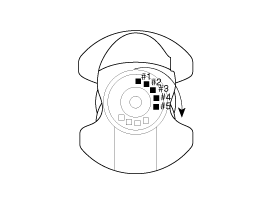
|
Conform to read stamping order as shown arrow
direction from #1.
|
Crankshaft Specifications
Class
|
Mark
|
Outside Diameter Of
Journal
|
I
|
1
|
51.954 ~ 51.960mm
(2.04543 ~ 2.04567in.)
|
II
|
2
|
51.948 ~ 51.954mm
(2.04519 ~ 2.04543in.)
|
III
|
3
|
51.942 ~ 51.948mm
(2.04496 ~ 2.04519in.)
|
Crankshaft Bearing Identification Mark
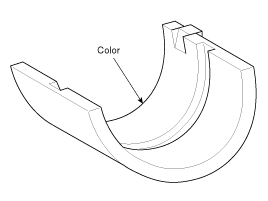
Crankshaft Bearing Specifications
Class
|
Mark
|
Thickness Of Bearing
|
AA
|
Blue
|
2.026 ~ 2.029mm
(0.07976 ~ 0.07988in.)
|
A
|
Black
|
2.023 ~ 2.026mm
(0.07965 ~ 0.07976in.)
|
B
|
None
|
2.020 ~ 2.023mm
(0.07953 ~ 0.07965in.)
|
C
|
Green
|
2.017 ~ 2.020mm
(0.07941 ~ 0.7953in.)
|
D
|
Yellow
|
2.014 ~ 2.017mm
(0.07929 ~ 0.07941in.)
|
Selection Chart For Crankshaft Bearings
Crankshaft Identification
Mark
|
Crankshaft Bore Identification
Mark
|
Assembling Classification
Of Bearing
|
I (1)
|
a (A)
|
D (Yellow)
|
b (B)
|
C (Green)
|
Components
1. Piston ring
2. Piston
3. Connecting rod
4. Connecting rod upper bearing
5. Piston pin
6. Connecting rod lower bearing
7. Connecting rod bea ...
See also:Filler-Neck Assembly. Repair procedures
Removal
1.
Disconnect the fuel filler hose (A), the vapor tube quick-connector
(B), and the ventilation tube quick-connector (C).
2.
...
Auto down window (if equipped) (driverŌĆÖs window)
Pressing the power window switch momentarily to the second detent position (6)
completely lowers the driverŌĆÖs window even when the switch is released. To stop
the window at the desired posit ...
Components and Components Location
Components Location
1. AVN (A/V & Navigation head unit)
2. Midrange speaker
3. External amplifier
4. Roof antenna (GPS + SDARS)
5. Front door speaker
6. Rear spe ...
| |
 Hyundai Sonata: Cylinder Block. Repair procedures
Hyundai Sonata: Cylinder Block. Repair procedures
